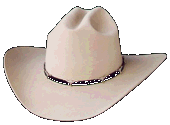Saturday, March 17, 2007
Life on Earth - Episode 08 - Lords of the Air
"The eighth episode focuses on birds. The feather is key to everything that is crucial about a bird: it is both its aerofoil and its insulator. The earliest feathers were found on a fossilised archeopteryx skeleton in Bavaria. However, it had claws on its wings and there is only one species alive today that does so: the hoatzin, whose chicks possess them for about a week or so. Nevertheless, it serves to illustrate the probable movement of its ancestor. It may have taken to the trees to avoid predators, and over time, its bony, reptilian tail was replaced by feathers and its heavy jaw evolved into a keratin beak. Beaks come in a variety of shapes depending on a bird’s feeding habits: examples given include the pouched bill of a pelican, the hooked beak of the vulture and the elongated mouth of the hummingbird. Attenborough hails the tern as one of the most graceful flyers and the albatross as a skilled glider. The swift is shown as one of the fastest: it can fly at 170 km/h. Birds communicate through display and/or song, and the elaborate courtship rituals of New Guinea’s birds of paradise are shown. All birds lay eggs, and the range of different nesting sites and parenting skills is explored. Finally, Attenborough visits Gibraltar to observe migratory birds. These rely on thermals when flying overland and use height to conserve energy when crossing oceans. It is estimated that some 5,000 million southbound birds cross the Mediterranean Sea each autumn."
Subscribe to:
Post Comments (Atom)












No comments:
Post a Comment